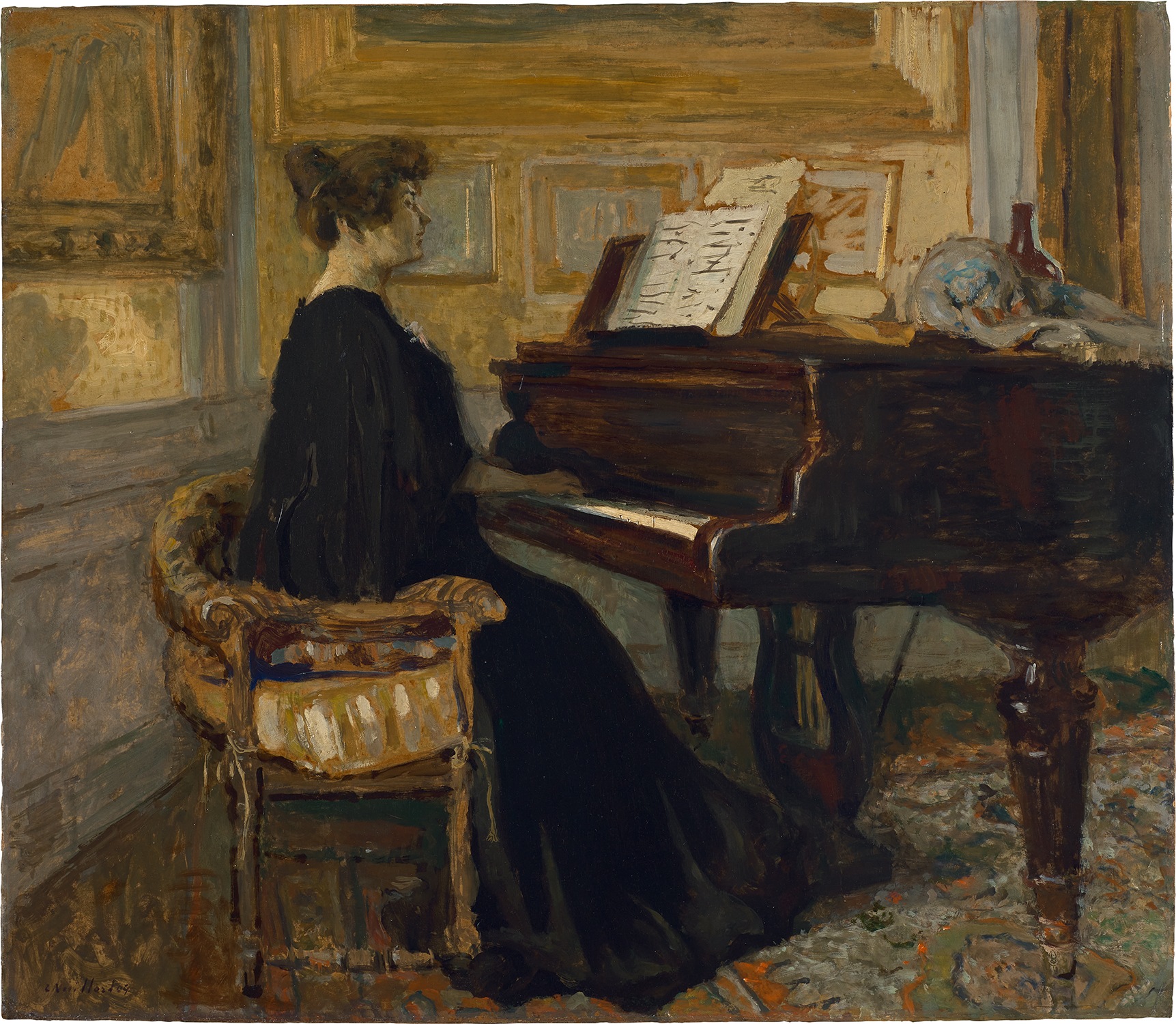

Property from an Important Private American Collection
169
Édouard Vuillard
Mme Arthur Fontaine au piano
signed and dated "E Vuillard 04" lower left
oil on board mounted on cradled panel
21 1/2 x 24 1/2 in. (54.6 x 62.2 cm)
Painted in 1904.